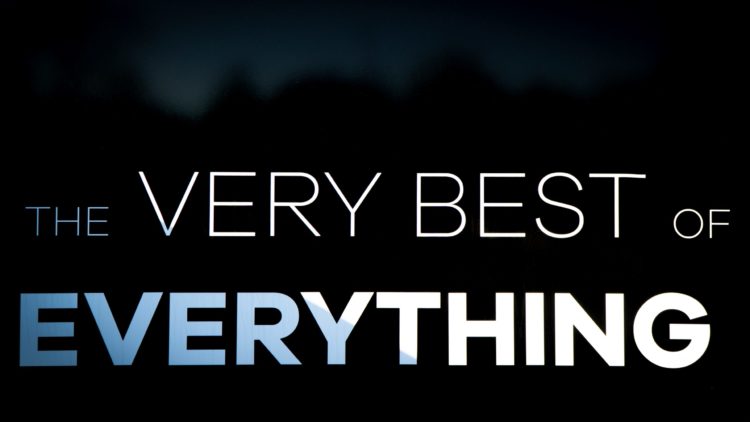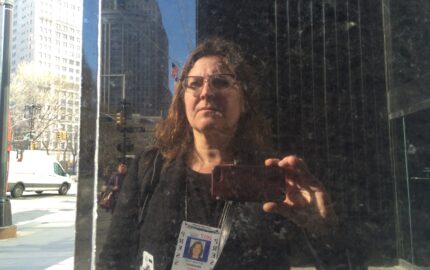As the year comes to a close, we bring you our version of the best-of lists. We started with the reader's choice awards: the Storyboard posts that ranked in the top 10 according to pageview analytics.
Today we dish up the editor's picks. A couple of the pieces overlapped. (Who doesn't want to read about sex and cats?) But we pushed past the algorithms to identify other posts that represent both the range and mission of Storyboard.
The danger of any such list is that there are always worthy people and things left out. With that apology — and an invitation for you to offer your personal picks apart from analytics — here it is:
Today we dish up the editor's picks. A couple of the pieces overlapped. (Who doesn't want to read about sex and cats?) But we pushed past the algorithms to identify other posts that represent both the range and mission of Storyboard.
The danger of any such list is that there are always worthy people and things left out. With that apology — and an invitation for you to offer your personal picks apart from analytics — here it is:
- Top post according to above criteria of range and mission. This pick reveals my bias for the practical. As an editor, teacher and story coach, I strive to offer both tools and inspiration. I hope both are present in all the posts we feature. But my own struggles as a writer are echoed again and again by the writers I work with now: They want to know not just the art that is possible in journalism, but the craft that creates that art. And of all the struggles I get asked about most often, two rise again and again: Story focus and story structure. Given that, my nod for a post that demonstrates the best of Storyboard goes to Line Vaaben of Denmark, with her practical and inspiration piece about "Sticking a story together." Vaaben walks readers, step by step, through the process she uses to take a mountainous mess of notes and tame it into a cohesive, compelling story, whether it's about the never-seen world of forensic autopsies, the profile of a transgender man or the journey of a pig from birth to her dinner table (not available, alas, in English)
- Our occasional and loosely titled series, "So you want to write a book?" Storyboard has featured posts from and about several nonfiction book authors through the years. The goal this year was to be direct and pragmatic: What challenges should newspaper and magazine journalists expect when they take the leap to authorship. We'll continue this in 2023. If there's a leap you want us to feature, let us know.
Mallary Tenore: The risks and rewards of memoir
Lauren Kessler: Becoming your own book marketer
Bryan Denson: Ego and resilience
Bryan Denson: Queries and agents
Chip Scanlan: A self-publishing primer
Casey Parks: Letting go of journalistic boundaries
- Another favorite occasional series lacks an umbrella title. If it had one, it might be "Writing lessons from daily life." This includes four posts, with more to come in 2023, about how mundane daily chores reveal the steps necessary to conceive, report, write, rewrite and edit a successful story.
Lauren Kessler: Why harvesting and hacking blackberries is like writing
Jacqui Banaszynski: Yardscaping your way to a story
Charles Scudder: Writing lessons from crafting beer
Kim Cross: Stacking wood as story structure
- Annotations are an anchor for Storyboard: A contributor identifies a stand-out story — usually a deeply reported narrative — and works with the bylined journalist to annotate the text, discussing decisions, challenges, ethics and surprises encountered along the way. They take a serious investment of time — for the contributor, the featured journalist, the editor (me) and the reader (you). But again and again, that investment pays off in lessons that provide a top-flight journalism education. You can find them all by clicking on Story Annotations in the left-hand menu on the Storyboard home page. Some favorite examples were from writer, story coach and go-to annotator Chip Scanlan.
Tim Sullivan of AP: One communities' deep COVID divide
Esme Duprez of Bloomberg: Helping her father die
Rachel Aviv of The New Yorker: Exposing the "troubled teen industry"
- Even in hard times — maybe especially in hard times — I celebrate stories that surprise, make me sigh or make me smile.
Lisa Grace Lednicer: Writing wisdom from "The Canterbury Tales"
Trevor Pyle: Baldwin, Coltrane and Obama
Corrine Purtill: The celebrity alligator of L.A.
Ashley Lodato: Writing about community as a non-journalist
- Finally, a big nod to Elizabeth Toohey, a PhD in literature who teaches at City University of New York. As she made her way through academic English departments, she stumbled into a journalism class. Her essay, targeted at fellow academics, makes a strong argument for teaching journalism as the best way to teach clear, credible, compelling writing. Huzzah!



